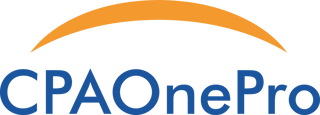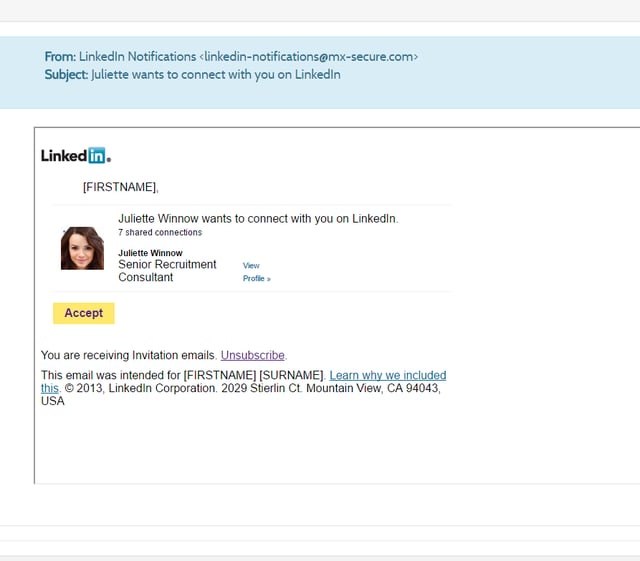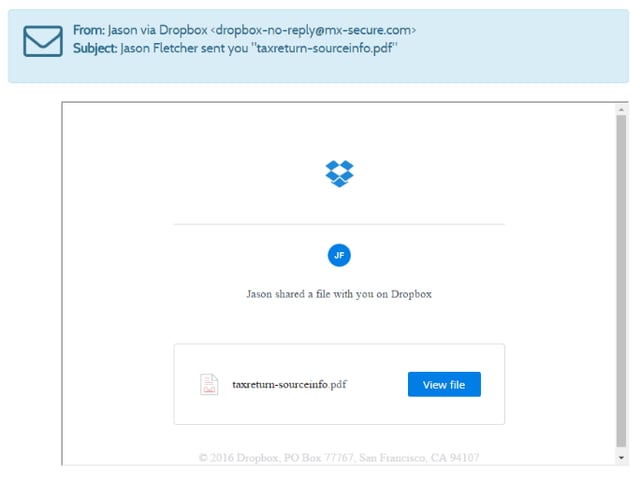Paul J. Smith, AIF and Gary Sutherland CIC, MILS
NAPLIA (North American Professional Liability Insurance Agency, LLC)
Hardly a day goes by that we are not asked by a client or colleague what impact the new DOL Conflict of Interest rule will have on Professional Liability insurance underwriting and pricing - given NAPLIA’s presence in the market, and history as thought leaders in the financial industry insurance space.
Like many interested parties, we have gone through a series of reactive conclusions, from “no big deal” to “absolute horror”, depending on the latest webinar or seminar we attended. In fact it was almost embarrassing when we attended a seminar in NYC where the industry speakers were near tears, when discussing how unprepared they were for the change.
Our firm’s DNA is for the most part in the RIA space, but I started my career at PaineWebber as a stock and Bond Salesman, at least that’s what the branch manager called us twenty five years ago. The idea that we might be fiduciaries was never on the radar screen. We were a distribution channel for the IPOs the firm had a hand in marketing, in addition to selling our favorite stocks of the day on the secondary market, to whom ever would write us a check.
This background may add some flavor to my team’s approach to the leading question posed by clients and colleagues above; what effect the new DOL Conflict of Interest rule will have on Professional Liability insurance underwriting and pricing?
The insurance industry isn’t very good at answering questions based on forward looking markets where a paradigm change has taken place – where’s the data, who has underwritten this in the past? With no data, a judgement call must be made, and the insurance industry is built around the theory of large numbers, and the story they tell.
When the numbers aren’t available, underwriters assume the worst. It’s an instinctual reaction – until the numbers tell me differently, I’m going to assume the “change” will bring more risk to the table, than less.
In my “absolute horror” stage, I was asked to take a stab at what premium increases Broker Dealers could expect per Registered Rep, and after careful analysis, I came up with 25%; suggesting that the average cost per Rep might go up $500 to $1,000 annually.
To Justify that conclusion (or prognostication), I’d have to come up with some hard data, as to where the new claims would come from, and why it was inevitable that more claims would in fact be triggered by the new rule. Up until this point I was operating on what I’d heard from others – read or seen at webinars and seminars, rather than using my 20 plus years in the industry to develop a well thought out, defensible conclusion. That’s where my theory hit a bit of a roadblock.
Actually it was more of a guess than a theory, and what became clear was that I was transferring the financial industries fear of change and expensive consulting infrastructure overruns, into an existential threat that an increase in client claims were inevitable. I hadn’t de-coupled the overall industry dread from what was likely to happen on the client liability side of the equation.
At my colleagues prodding, we began to explore the real existential threats to E&O carriers, and why an assumed increase in claims might in fact, not be on the horizon. The rest of this paper is based on our primary reasons why the obvious conclusion of higher premiums and more frequent claims is more than likely not the case (specific concepts are bolded).
The marriage of Compliance, Risk Management and the Corner Office Executive Suite has been in the works for years. How often have we heard that good compliance equals good business – use it as a marketing tool. Overnight the Compliance folks at the Broker Dealer are driving the bus and playing a leadership role.
In reality, the Broker Dealer community has been significantly more compliance focused for years, in comparison with a nearly unsupervised RIA world that’s done an amazing job of self-management – making their 40Act fiduciary status as the pillar of their professionalism.
Because FINRA has always brought much more structural oversight to the Broker Dealer world, than has ever been present in the RIA world -- our feeling is that the intellectual horsepower is in place at the Broker Dealer firm’s to take this current change on, maybe more so than the small RIA who’s looking at far fewer changes, but with far fewer resources.
In fact, not many are talking about FINRA Rule 2111 that preceded the recent DOL change, taking effect in October of 2010. The FINRA rule addition, approved by the SEC, brought the Broker Dealer Rep, much closer to operating in their client’s best interest than had ever been the case. The concepts of Suitability and Best Interest were suddenly brought much closer, and looking back, under appreciated.
New FINRA Rule 2111 generally is modeled after former NASD Rule 2310 (Suitability) and requires that a firm or associated person “have a reasonable basis to believe that a recommended transaction or investment strategy involving a security or securities is suitable for the customer, based on the information obtained through the reasonable diligence of the member or associated person to ascertain the customer’s investment profile.” The rule further explains that a “customer’s investment profile includes, but is not limited to, the customer’s age, other investments, financial situation and needs, tax status, investment objectives, investment experience, investment time horizon, liquidity needs, risk tolerance, and any other information the customer may disclose to the member or associated person in connection with such recommendation.”
The new rule makes clear that a broker must have a firm understanding of both the product and the customer.
It also makes clear that the lack of such an understanding itself violates the suitability rule.
The new rule continues to use a broker’s “recommendation” as the triggering application of the rule, and continues to apply a flexible “facts and circumstances” approach to determining what communications constitute such a recommendation.
The new rule also applies to recommended investment strategies, clarifies the types of information that brokers must attempt to obtain and analyze, and discusses the three main suitability obligations. Finally, the new rule modifies the institutional-investor exemption in a number of important ways. (Taken from FINRA Regulatory Notice 11-02)
Our contention is that since the Pension Protection Act in 2006, many of the Broker Dealer Reps working in the Retirement Plan market have gone to flat fee pricing, utilizing 12b(1) fees, and in many ways have already been acting with fiduciary stewardship ideals, front and center.
The RIA community never had a monopoly on prudence and putting the client’s needs first. The competition in the marketplace has done a great deal to raise the bar, and bring down all too high fees over the last ten years since the PPA and the DOLs 408(b) Fee Disclosure Rules that took effect in 2012. The new DOL Conflict of Interest Rules will further these trends.
Meaningful product reviews are taking place at every Broker Dealer in America. Mutual Fund shops are being pressured to make institutional funds available to small investors, and compliance teams are lifting the hood on incentives that could possibly sway Reps to push products that may not be in the client’s best interest.
Approved product lists will become much more front and center, as compliance teams increase oversight and play more meaningful management roles. Investment options in the Plan and IRA space will be intensely vetted, and as a result limited.
Benchmarking will become critical – giving the Reps and Broker Dealers objective pricing data, to present to the IRA / Plan client in the product discussion. This benchmarking focus will act to prevent client claims, rather than increase them. We see nothing in these changes that are not a catalyst a reduction of risk for the E&O carrier.
The reasonable fee requirement that’s part of the Full and Limited BIC Agreement (taken straight from ERISA), will require more transparency than ever before, especially in the IRA market. Reps, Advisors and financial institutions will be on record, justifying case by case how the BIC Exempted recommendations are in the Clients Best Interest.
This will put the brakes on claims – creating a formal agreement amongst the parties that the particular investment is appropriate and in the clients’ best interest. In the vast majority of financial industry claims we have seen over the years, the foundation underlying the claim has been the client didn’t know – was never told about the true cost of the transaction. Be it an upfront commission, or lack of liquidity – transparency will stem the tide of E&O claims based on poor communication.
We expect an increase in the percentage of Level Fee based activity in the Qualified Plan / IRA space, as some Broker Dealers are moving in that direction on an enterprise level, and commission based activity done under the BIC Exemption, as noted above, will force additional focus on reasonableness and transparency.
The existence of a signed BIC agreement (by the financial institution and the client) will in itself create a clear record of product approval that will be difficult to walk back – making client claims of Rep driven ignorance, difficult to sustain in a court of law. This is especially true if the Broker Dealer implements the recent DOL suggestions, as regards handling of the Contracts and making them available on their website.
Section II of the BIC Exemption requires that financial institutions agree to certain standards and make specified warranties in a written contract with their IRA and non-ERISA plan customers. Section II(a)(2) of the BIC Exemption requires financial institutions to maintain an electronic copy of the retirement investors’ contracts on its website that is accessible by the investor.
The best practice is for a financial institution to maintain an executed copy of the retirement investor’s individual contract on its website that is accessible by the retirement investor. This ensures that the retirement investor will have ready access to a statement of his or her rights and potentially eliminates many needless disputes about the existence of the contract and the scope of the financial institution’s obligations under that contract……… (Taken from the DOL recent FAQ on the Conflict of Interest Exemption)
Having the Client Contract online, connected to the clients account, will be a powerful reminder to both parties what has been agreed to. We strongly recommend this approach, and feel that if this transparent posting of the Agreement is done, the likelihood of claims will be further reduced.
We also feel strongly that the Financial Institution follow-up every sale with a client communication – confirming the client has understood the Contract and has a copy. There are organizations that are already offering that service for a small fee – LIMRA is one of them.
Better training of Reps in fiduciary concepts will inevitably take place, as part of expanded training programs. Fi360 has been the center of this training, and will likely continue to expand their training programs in connection to the new regulations.
As discussed above, the elevated FINRA suitability rules have started this client focus at Broker Dealers, but we expect to see a much greater focus on fiduciary training as a result of the DOL changes connected to who is a fiduciary, and the elevated responsibilities connected to the Reps new status.
It makes common (prima facie) sense that a new “higher” fiduciary standard will raise the bar on the quality of client care. Taken from the DOLs recent FAQ:
The initial standards specifically require advisers and financial institutions to:
- Give advice that is in the “best interest” of the retirement investor. This best interest standard has two chief components: prudence and loyalty: Under the prudence standard, the advice must meet a professional standard of care as specified in the text of the exemption; Under the loyalty standard, the advice must be based on the interests of the customer, rather than the competing financial interest of the adviser or firm;
- Charge no more than reasonable compensation; and
- Make no misleading statements about investment transactions, compensation, and conflicts of interest.
Clarity in Reps and IARs responsibilities connected to rollovers from qualified retirement plans to IRAs will help guide these transactions, and lower the risk that they are completed without attention to the clients’ best interest, with a focus on prudence and loyalty. The rule change sheds further light on how Level Fee Advisors can use a Streamlined BIC Agreement when recommending participants move to IRAs away from the plan.
However, the BIC Exemption does provide relief for investment advice to roll over a participant’s account, even if the adviser serves as a discretionary fiduciary with respect to the plan or that participant’s account and will provide fiduciary investment advice following the rollover, as long as the adviser does not have or exercise any discretionary authority or discretionary control with respect to the decision to roll over and the other applicable conditions of the exemption are satisfied.
This clarity and Prohibited Transaction protection essentially shields the Rep and Advisor from second guessing and client remorse, that in the past has led to claims. Naturally this risk management and reduced exposure assumes the proper precautions and disclosures are made. This is another area where we feel the risk of client claims will be reduced by the change.
Essentially, the rule change in concert with utilization of the BIC Exemption, will help eliminate conflicts of interest and self-dealing. As discussed earlier, lack of communication and transparency have been a historic driver of claims, we believe the new rule will significantly limit misrepresentation of product and cost detail, lowering the Reps opportunity for inherent conflicts and self-dealing.
The full BIC Exemption provides that financial institutions cannot “use or rely upon quotas, appraisals, performance or personnel actions, bonuses, contests, special awards, differential compensation or other actions or incentives that are intended or would reasonably be expected to cause Advisers to make recommendations that are not in the Best Interest of the Retirement Investor.”(DOL Bulletin)
It’s our belief that the Retirement Plan business will continue trending toward flat fee pricing, and we will see little if any transaction driven commission business going forward. The fiduciary rule will create an environment where deposit based commissions will be difficult to justify, even in the small/micro market, as products are developed for this space to accommodate small and startup plans. The next wave of MEP Plans with outsourced fiduciaries will only serve to further this trend toward lowering the volume of E&O claims.
Our conclusion is that the DOL Conflict of Interest regulation, and changing the definition of who is a fiduciary, will reduce, not inflate the litigious environment and number of E&O claims we have traditionally seen in the financial services community.
Insurance carrier underwriters that understand how these moving parts will align to reduce risk in the Financial Services community, will find themselves better positioned to exploit the changes taking place in a compliance focused workplace.
It’s important that those effected by the changes realize there is a phase in or transition period with phase one starting April 10, 2017; the date when financial service provider status will change from non-fiduciary to fiduciary, and financial service providers must disclose any material conflicts of interest.
On January 1, 2018, the transition period ends and full compliance with all the exemptions conditions must be met.
Complete details of all the required disclosures is not the intention, or within the scope of this paper.
North American Professional Liability Insurance Agency, LLC (NAPLIA) is the leading independent agency in the country specializing in professional insurance products for Financial Professionals.
Contact:
Pauls@naplia.com
The information provided in this paper is intended solely for general educational purposes. It is not intended for the purpose of providing specific legal, insurance, or other professional advice to any particular recipient or with respect to any particular jurisdiction. The author, publisher, and distributor of this document (1) make no representations, warranties, or guarantees as to its technical accuracy or compliance with any law ( federal, state, or local) or professional standard; and, (2) assume no responsibility to any recipient of this document to correct or update its contents for any reason, including changes in any law or professional standard. You should formally retain the counsel of an attorney knowledgeable as to your industry, your practice, and the laws of any jurisdiction(s) within which you conduct your practice to ensure the document’s maximum usefulness and compliance with applicable laws and professional standards.

 North American Professional liability Insurance Agency, LLC (
North American Professional liability Insurance Agency, LLC (


